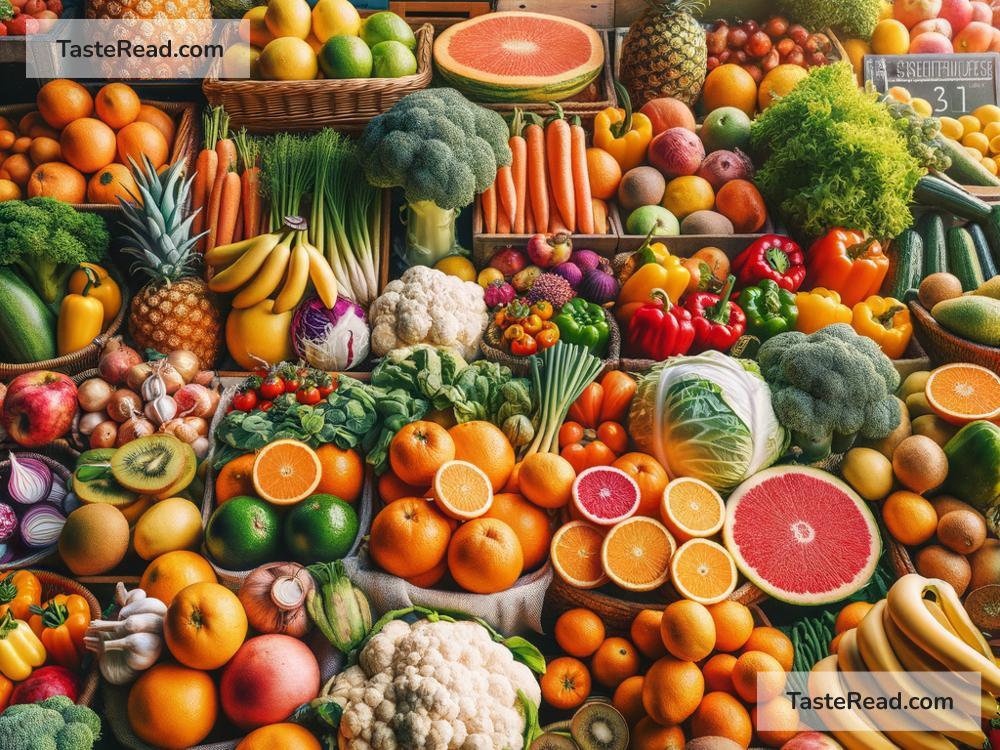Title: Exploring the Role of Biodiversity in Seasonal Produce
Biodiversity and seasonal produce are two terms we hear often, but how often do we see them linked together? Biodiversity, the variety of life in the world or in a particular habitat or ecosystem, plays a more crucial role in our daily lives than many might think. Especially when it comes to the fruits and vegetables we enjoy throughout the year. Let’s dive into how biodiversity enriches our plates with seasonal produce and why this matters.
Understanding Biodiversity
Imagine walking through a grocery store and seeing the same type of apple, the same kind of tomato, and the same lettuce variety all year round. That might seem convenient, but it’s far from natural. In nature, thousands of plant species provide us with different tastes, nutrients, and colors. This variety is the essence of biodiversity.
The Changing Seasons
Seasons change, and so does the produce they bring. In spring, we welcome leafy greens and asparagus; summer brings us berries and tomatoes; autumn welcomes squash and apples, whereas winter brings us root vegetables and citrus fruits. This pattern is not a coincidence but a result of thousands of years of natural selection and agricultural practices adapting to different climates and seasons.
Biodiversity’s Magic Touch on Seasonal Produce
Here’s where biodiversity comes into play with seasonal produce:
-
Nutrition and Taste: Biodiversity means a variety of nutrients and flavors. For instance, different types of berries ripen at different times, offering unique tastes and health benefits throughout the summer.
-
Environmental Health: A diverse range of plants supports a wider range of insects, birds, and other wildlife, keeping ecosystems healthy. Healthy ecosystems mean healthier soils and better growing conditions for our food.
-
Adaptation to Climate Change: Different species have different tolerances to weather changes. Biodiversity allows for more resilient food systems that can withstand unpredictable weather patterns.
-
Cultural Heritage: Many cultures have specific fruits and vegetables associated with their traditional cuisines and celebrations, encompassing centuries of agricultural biodiversity. This diversity enriches our culinary experiences and connects us to our heritage.
Why Should We Care?
Eating with the seasons and choosing a variety of foods not only benefits our health but also the planet. Here are a few reasons why paying attention to biodiversity in our diets is crucial:
-
Supporting Local Ecosystems: When we consume seasonal, locally grown produce, we support the biodiversity of our region and encourage the maintenance of various plant species.
-
Reducing Environmental Impact: Seasonal produce often requires less artificial help to grow (like greenhouses or long transport hauls), which means a smaller carbon footprint.
-
Enjoying Fresher, Tastier Food: Fruits and vegetables are at their best when they’re grown in their natural season. They’re not only tastier but often more nutritious.
How Can We Play a Part?
Here are simple ways to support biodiversity through our food choices:
-
Go Local: Buy from local farmers markets or sign up for a CSA (Community Supported Agriculture) box. This not only supports local farmers but also reduces your carbon footprint.
-
Eat Seasonally: Try to eat fruits and vegetables that are in season in your area. This might mean enjoying strawberries in summer rather than in the middle of winter.
-
Experiment with Varied Produce: Don’t shy away from fruits and vegetables you’re not familiar with. Trying different types can help support a wider range of plant species and can be a fun culinary adventure.
-
Grow Your Own: If you have the space, growing your own food can be a gratifying way to connect with nature and understand the cycles of plant life.
Conclusion
Biodiversity in seasonal produce is a celebration of nature’s variety and an essential aspect of sustainable living. By being mindful of the seasons and the diversity of food we eat, we can enjoy a healthier diet, reduce our environmental impact, and preserve the rich tapestry of plant life on our planet. Next time you pick up a piece of fruit or a vegetable, think about the journey it has taken through the seasons and the variety of life it represents. Let’s embrace the diversity on our plates!


